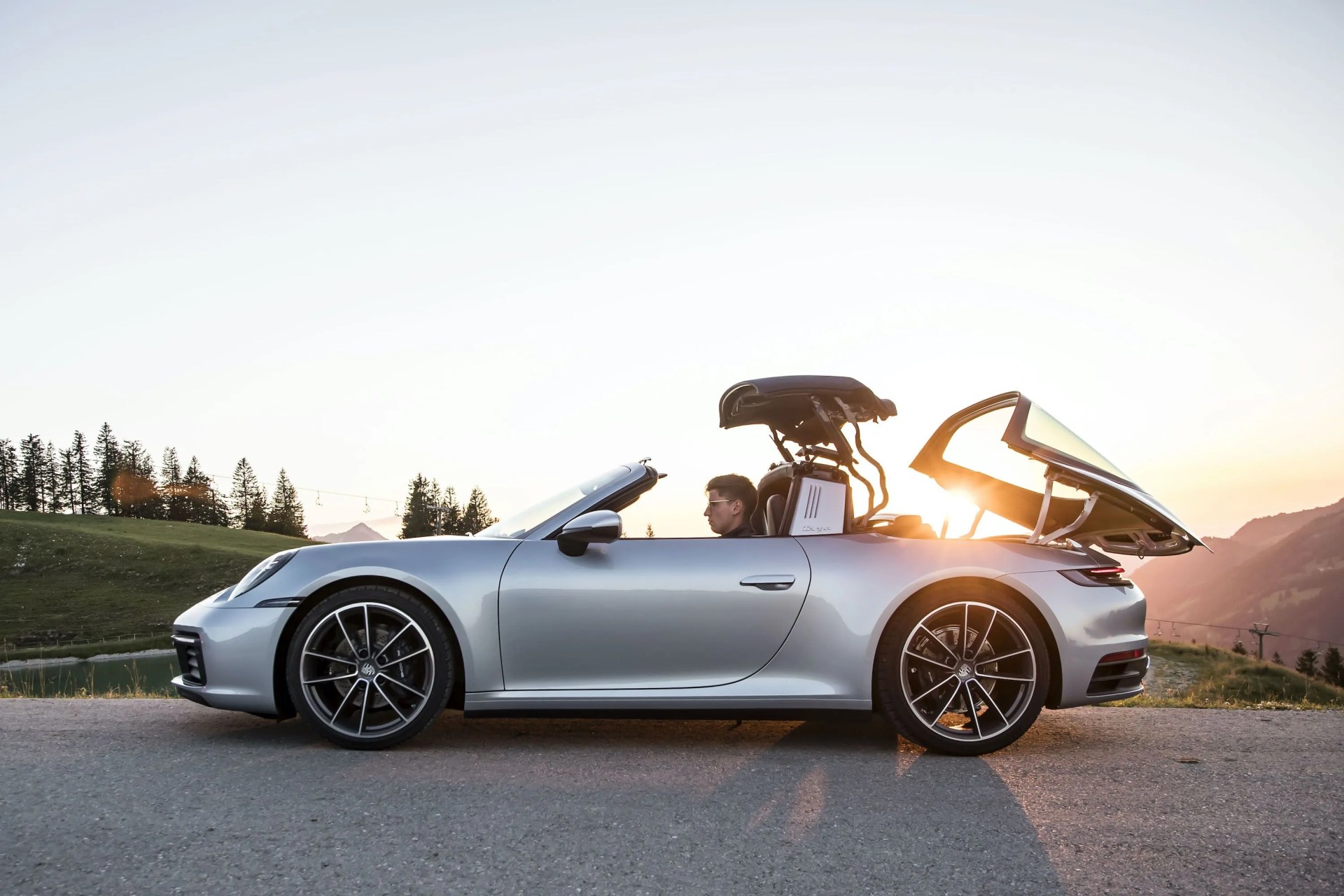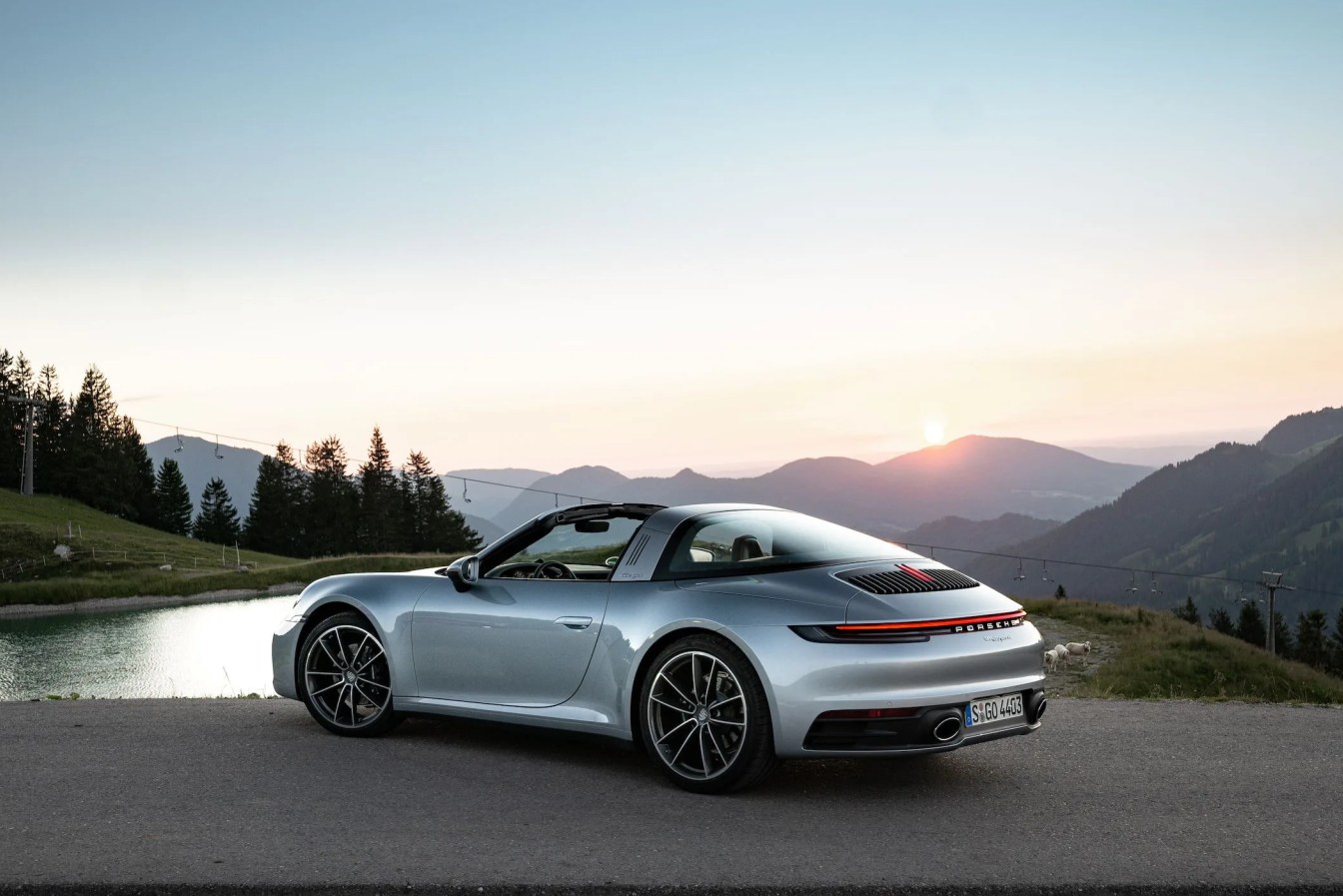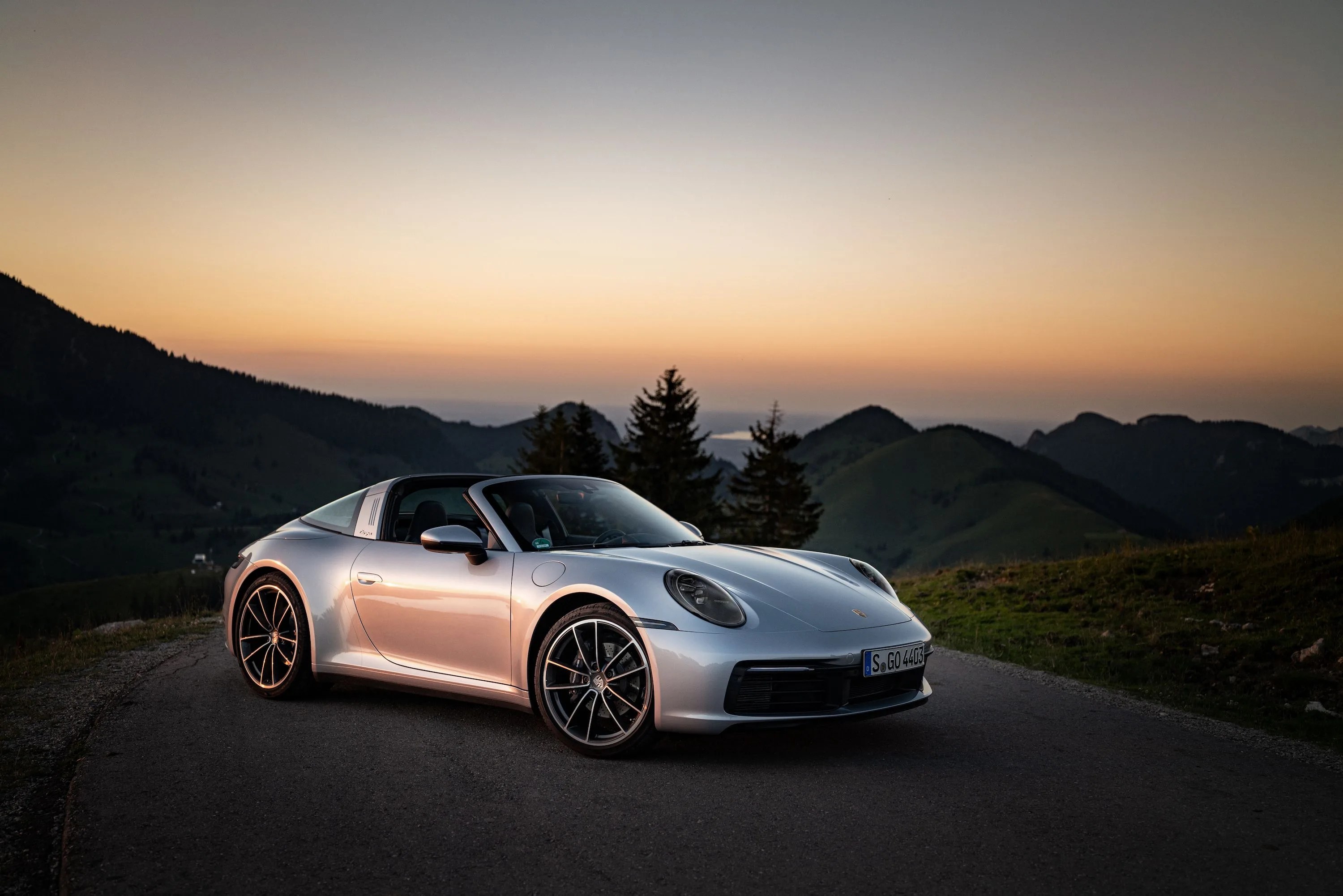I have a confession to make: the Targa could be my favorite body style of the new Porsche 911.
The 911 coupe, after all, is one of the most gorgeous vehicles ever to roll across the face of the planet, but even with a sunroof, it keeps you largely isolated from the beautiful world around you. The cabriolet lets the sun shine in if wanted, but at the cost of that iconic shape. The targa version splits the difference, and in 992-generation form, it does so perfectly; the 911 Targa is nearly as sexy as the hardtop, but offers a driving experience it simply can’t match.
Granted, it’s not as much open-air freedom as the convertible, but I’d argue that makes it better. You still get the effect of open-air motoring that drives people to buy ragtops — You still very much feel like part of the world around you, rather than floating through it in a hermetically sealed bubble — but because of the fixed rear glass and smaller opening, you’re not blasted with as much direct sunlight, and it’s not nearly as windy.
 Porsche
PorscheThe Corvette Stingray (both the current mid-engined wonder and past versions alike) also makes a great case for the targa top. Its is simpler, though, requiring an awkward reach and a delicate shove into the trunk to lock it into place. There, it’s a nice value-add, but one most people won’t use. The 911 Targa’s ace in the hole is its ease of use; just like in a 911 Cabrio, all it takes is a long press of a button in the center console, and the top and rear glass enter into a mechanical ballet that raises and lowers in about as much time as it takes you to hum the Final Jeopardy tune. (Unlike the soft-top 911 and many modern convertibles, however, it doesn’t work while the car is moving; blame the dangers of having a giant wraparound piece of glass in back hanging out in the middle of traffic.)
 Porsche
PorscheNow, you might associate targas with the oft-maligned cars of the ‘70s and ‘80s, an era when the convertible’s future seemed in doubt and removing the roof often reduced a car’s structural integrity to that of a Jell-O casserole. Banish those thoughts. Modern cars have far greater structural stability; besides, most open-top cars today are engineered as such from the factory, not simply coupes that engineers took hacksaws to in order to give the product planners something new. (Also, don’t make the rookie mistake of confusing targa tops with T-tops, the smaller pop-out panels separated by a thick, immovable structural component found in the likes of the old Chevy Camaro and the Nissan 300ZX.)


